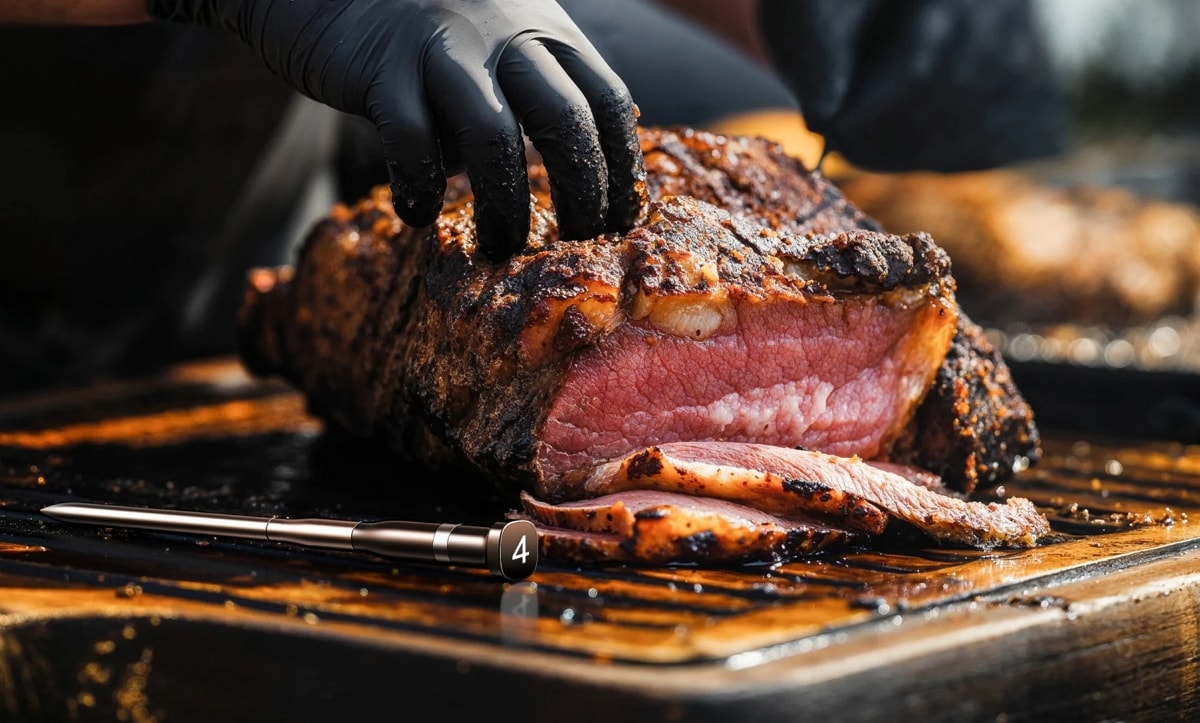For any cook who’s ever been in that awkward situation of guessing if their roast is done or worrying about undercooking a steak, not having the right tools in the kitchen is a real pain point. A meat thermometer would well remedy this.
The common question about meat thermometers is: Should I go for a wired or wireless meat thermometer? Both play good pros, but which suits your needs? Let’s compare wired vs wireless meat thermometers so that you can decide on your own.
Table of contents
What is a Wired Meat Thermometer?
A wired meat thermometer is a classic kitchen tool that features a probe on one end and a digital display unit on the other. For cooks who want simplicity and precision, this one is the perfect pick. The probe is stuck into the meat, and the wire is used to transmit temperature data to the display unit, which can be set on the countertop or beside the oven or grill. A wired instant-read thermometer is well regarded for its ruggedness and ease of use.
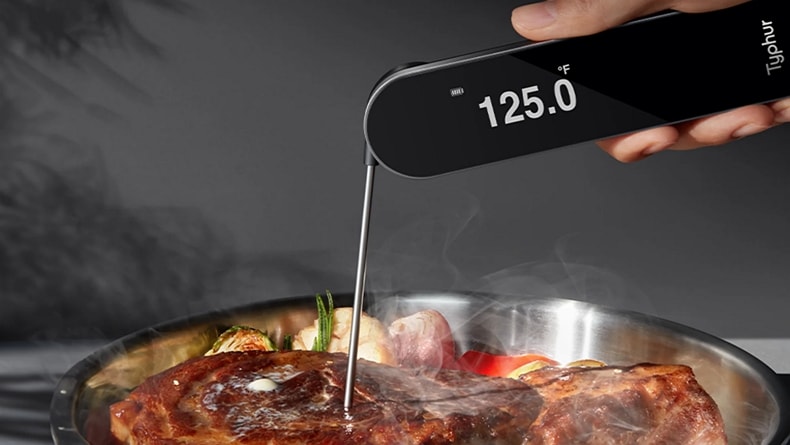
Pros:
- Accuracy: Fast, real-time, and accurate readings are some of the traits that wired meat thermometers advertise.
- No Battery Worries: As they do not require batteries for the display unit, you don’t need to worry about battery life or recharging.
- Affordable: Less expensive than wireless thermometers.
Cons:
- Limited Mobility: The wire of the thermometer transects your movement, so your movement is restricted while cooking.
- Single Use: Most of the wired thermometers only allow one piece of meat to be monitored at a time.
Best For:
Wired thermometers are good for those who cook smaller cuts of meat or who do not mind staying close to their oven or grill. They are ideal for beginners who require a dependable tool without a complicated setup.
What is a Wireless Meat Thermometer?
Wireless meat thermometers are an evolution in the kitchen gadget arena. It uses Bluetooth or Wi-Fi technology to transfer temperature data to a smartphone app or a remote display unit. They allow you to monitor the cooking from a remote location so that you are free from being glued to the oven or the grill. Many of these thermometers feature multiple probes to monitor several pieces of meat at one time.
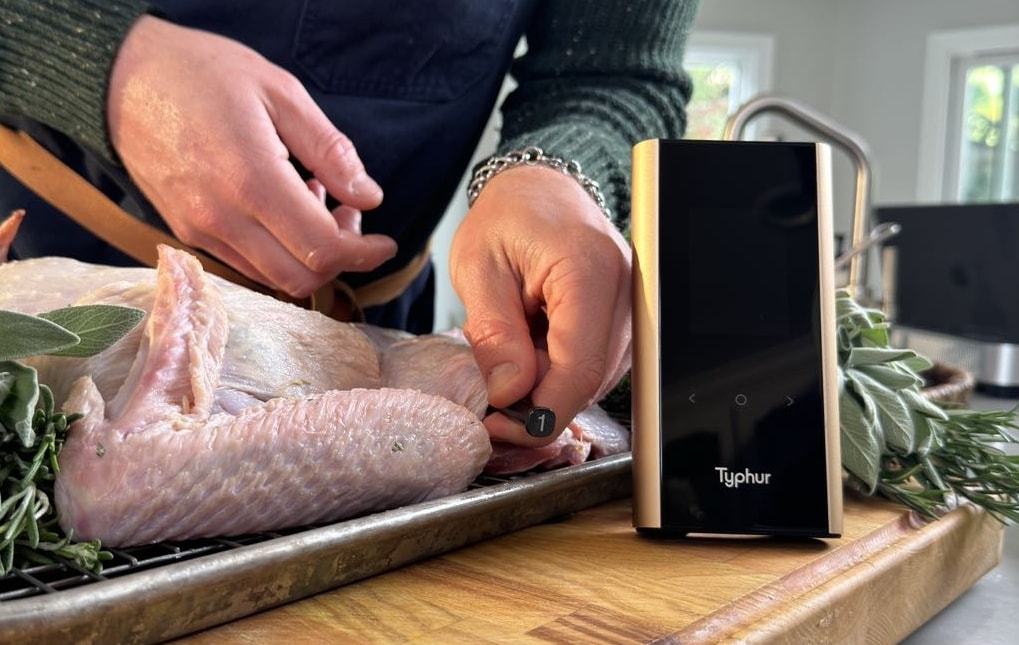
Pros:
- Remote Monitoring: You can check your meat’s temperature from anywhere in the house through a smartphone or alternative device.
- Multi-Use: Most of these models allow you to check multiple meats at once, making them ideal for cooking different meats at the same time.
- Convenience: No wires mean you’re free to multitask and relax while the food cooks.
Cons:
- Setup Complexity: You need to set up a Bluetooth or Wi-Fi connection, which can be a little more complicated than a wired model.
- Battery Life: Wireless will need to recharge or replace batteries more often.
- Higher Price: These models are usually more expensive due to the added technology.
Best For:
Wireless thermometers are perfect for those who cook large cuts of meat, such as roasts or whole turkeys, or for people who frequently grill. As long as you want to move freely while watching your food, the wireless option is good.
Wired vs Wireless Meat Thermometer: Key Differences
When choosing between a wired or wireless meat thermometer, some factors must be considered. These differ in terms of convenience, functionality, and performance. Here’s a closer look.
Mobility and Flexibility
One of the most obvious differences between wired and wireless meat thermometers is the level of mobility they offer. A wired thermometer, just as its name would suggest, connects a probe to a measuring unit by a wire. You have some liberty of economic movement, but basically, you need to stay around the oven or grill to watch the temperature.
In contrast, wireless thermometers, like the Typhur Sync Gold Dual, offer freedom from restrictions by providing temperature readings to your phone or remote display via Bluetooth or Wi-Fi. With dual probes, the Typhur Sync Gold Dual lets you monitor multiple pieces of meat at once, all from a distance, giving you the freedom to multitask or relax while your food cooks.
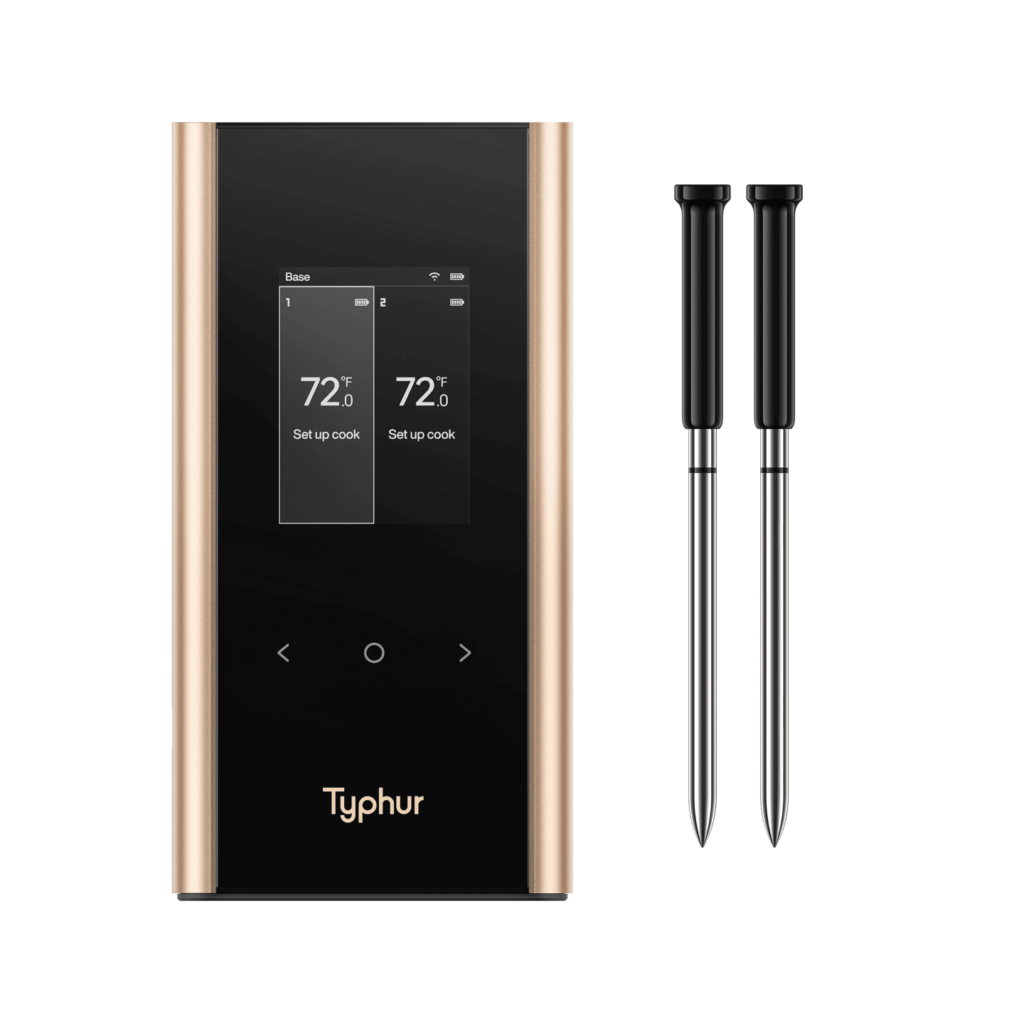
Long Range Wireless Meat Thermometer
Ease of Use and Setup
A wired meat thermometer is very easy to use. All you do is insert the probe into the meat while the unit sits on a counter or next to the grill, and temperatures are displayed. There are no apps or additional setup required, making these thermometers very user-friendly, even for beginners.
Wireless meat thermometers, however, may require an extra step or two, such as downloading an app or syncing the device to your phone or Wi-Fi. Setting up such a device for the first time might feel intimidating, but once connected, the ability to monitor food remotely is a big advantage.
Accuracy and Performance
Both wired and wireless meat thermometers are designed to provide accurate readings, but the differences in performance can sometimes depend on the technology behind them. Traditionally, wired thermometers provide very reliable and instantaneous temperature readings because the probe is connected straight to the display unit. The faster the results, the more ideal it is for precise cooking, especially for very quick jobs like grilling steaks or checking if a chicken breast is done.
When it comes to accuracy and performance, the Typhur InstaProbe Core is a step above the rest. Famous for its NIST certification, it guarantees reliable readings within 0.5°F accuracy. It is engineered to deliver instantaneous results that provide temperature readings within 0.5 seconds, making it among the fastest available for those who require such precise readings in a fast-paced environment.
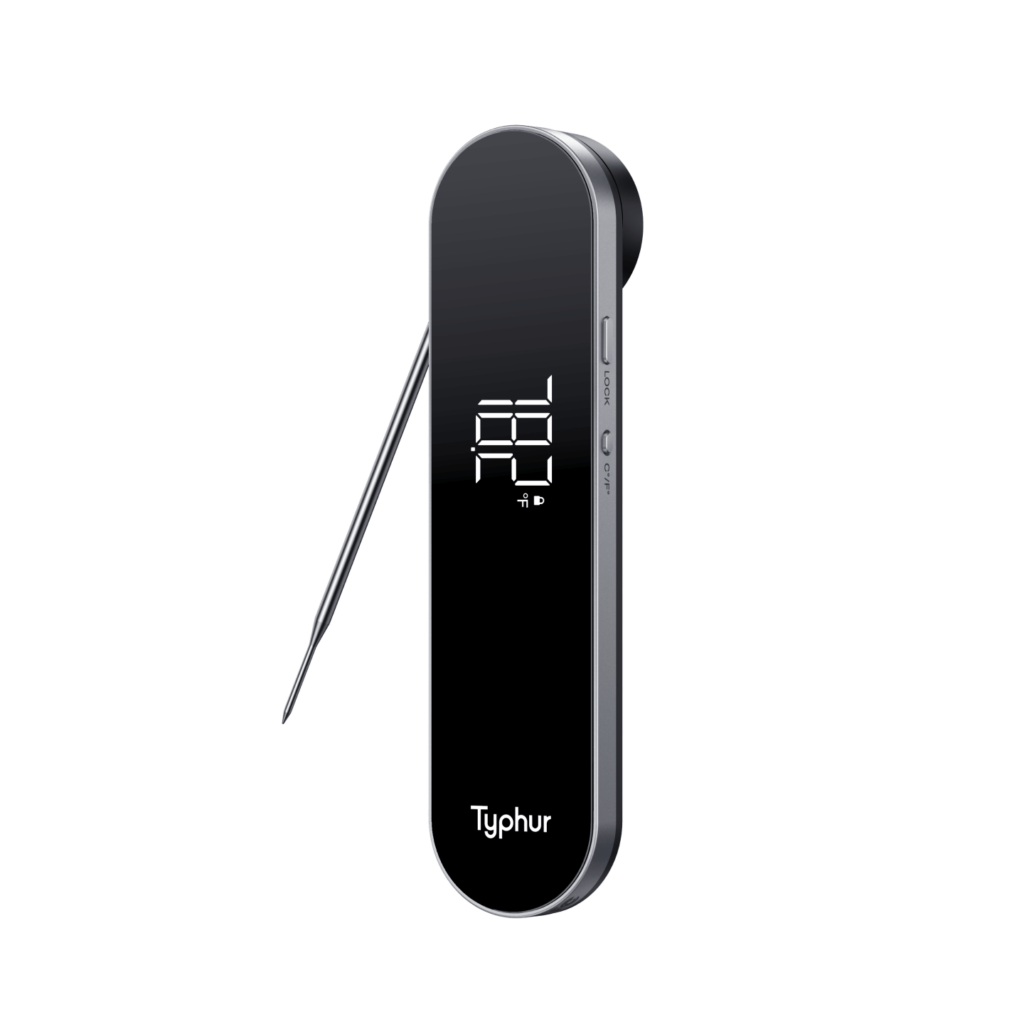
Instant Read Meat Thermometer
Cost and Value
Wired meat thermometers are usually priced less than wireless models. If you are running short on money or simply don’t care about remote monitoring, then a wired thermometer does precisely what it is intended to do at a lower cost.
Wireless thermometers, however, are invariably costlier due to advanced features. While they have a hefty upfront charge, they may well pay off for the dedicated cook or the person who often entertains large groups and cooks copious amounts of food.
Battery Life and Power
Since the display unit powers wired meat thermometers, there’s no need to worry about batteries. You can rely on the device as long as you have a power source, whether you’re using it in the kitchen or at the grill.
Wireless meat thermometers, however, rely on rechargeable batteries or disposable ones to operate. The battery life can vary by model, with some lasting several hours, while others can last a full day on a single charge.
How to Choose Between Wired and Wireless Thermometers
Choosing between a wired and wireless meat thermometer depends largely on your needs and preferences. Below are things to consider when making a decision:
Your Cooking Style
- If you usually cook meats that need constant attention, wireless meat thermostats represent a true convenience: no standing next to the oven or grill while checking temperatures.
- If you tend to be a more traditional cook or do not mind standing by the meat during its cooking, then wired thermometers will suffice. It’s easier and cheaper, and it does the job equally well.
The Type of Meat You Cook
- If you regularly cook larger cuts of meat like whole turkeys or roasts, a wireless thermometer could have the upper hand for flexibility. Instead of tracking several pieces of meat, you can move freely while the food is cooking.
- For smaller cuts, like steaks, a wired thermometer can provide the quick and accurate results you need without much hassle.
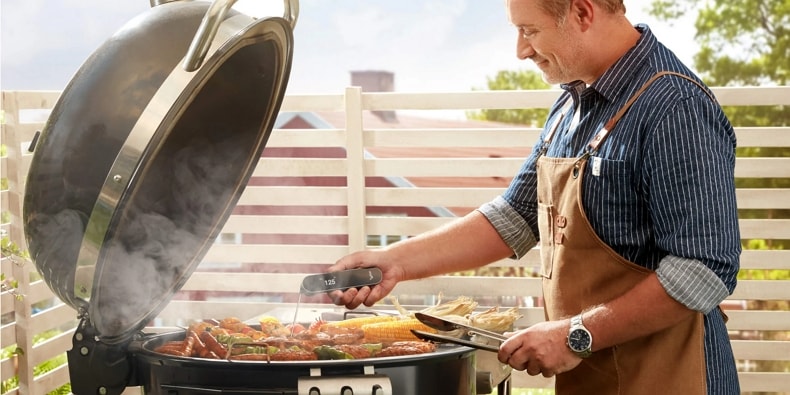
Your Budget
- Wired meat thermometers are generally more affordable. If you’re on a budget but still want a reliable way to monitor meat temperature, they’re a great option.
- If you’re willing to invest in additional features like wireless connectivity, mobile apps, or multi-probe options, then a wireless thermometer is a better choice.
Frequently Asked Questions
Both wired and wireless meat thermometers are usually highly precise. The key is ensuring the best quality thermometer of a brand one trusts, and many wireless thermometers nowadays can rival the precision of their wired counterparts.
Yes, wireless meat thermometers are safe. Just make sure to follow the manufacturer’s guidelines, especially when it comes to temperature ranges and app connectivity.
Most wireless thermometers are easy to set up, with step-by-step instructions in the manual or through an app. However, some may require syncing with your phone or Wi-Fi, so it’s a good idea to read the instructions before getting started.
Battery life varies depending on the model. Some wireless thermometers can last for 24 hours or more on a single charge, while others might need recharging after a few hours. Be sure to check the battery life specs for the specific model you’re considering.
Summary
When deciding between a wired vs wireless meat thermometer, consider your cooking processes, your degree of convenience needed, and your budget. Wired thermometers offer a straightforward and cost-effective solution, while wireless models provide flexibility and remote monitoring for a more hands-off approach to cooking.
Both are reliable options, so the choice ultimately comes down to what fits your cooking style and preferences best. Whether you’re grilling or roasting, having a meat thermometer ensures your dishes come out perfectly every time.




